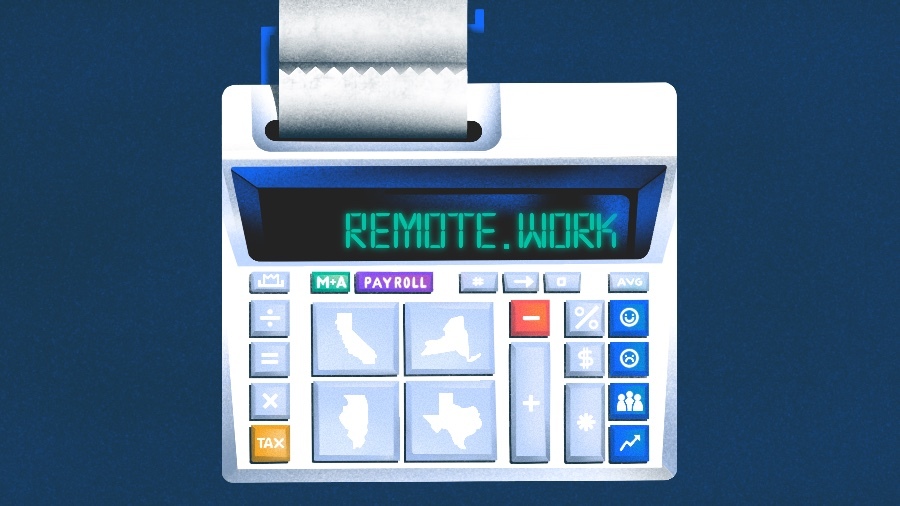Remote Work Faces Challenges In 2025. Here’s How Leaders Can Respond
By Rajat Mishra
The workplace evolution in 2024 made one thing clear: there’s no universal blueprint for the ideal office setup. While some companies went all-in on returning to the office, others embraced hybrid work models. Fully remote opportunities, however, have become increasingly rare.

The Wall Street Journal reported that only 8% of jobs were listed as remote in December 2024, a stark drop from 18% in early 2022. Yet, the remote work landscape is far from static — FlexJobs noted a 20% rise in remote job listings in 2024 compared to 2023, with 70% of these roles catering to intermediate or experienced professionals.
As we look ahead, the remote work trend might see a resurgence — but it won’t come without hurdles. One pressing challenge: combating the rise in stress and burnout among knowledge workers.
Here are three actionable ways leaders can address this challenge and support employee well-being in 2025.
Make your AI policies clear and provide support
In theory, artificial intelligence tools should help employees manage their priorities and outsource certain tasks. However, unclear company policies and swirling questions about the ethics of leveraging AI in the workplace mean that many employees are unsure how to adopt the technology. Research backs this up, showing that AI can increase stress and burnout by introducing new demands and uncertainties.
In addition, different adoption rates by employees and industries can set the stage for compounding mental health issues in the workplace.
For instance, a report on GenAI found that 50% of men are leveraging the technology, compared to only 37% of women. The problem? If one set of employees consistently uses AI to their advantage while another errs on the side of caution due to unclear guidance on which tools they are permitted to use, the latter will begin to look like they are underperforming by comparison.
There are also concerns that remote workers will suffer disproportionately here. To address this head on, employees need clear policies on AI combined with input from management that is delivered equally across hybrid structures. This should include approved use cases, IP guardrails and internal governance.
Promote work-life harmony
To unlock the best results from remote work, leaders need to recognize that it’s no longer a question of work-life balance, but “work-life harmony.”
Work-life balance refers to a time when the barriers between the two environments were clearly defined. This meant solutions focused on things like encouraging employees to leave the office on time, organizing team lunches or enacting policies that support childcare demands.
While the flexibility of remote work is one of its biggest draws, it’s also one of the biggest risks. When the workplace is inside of the home, the boundaries between the two can blur. In turn, it’s harder for employees to call it a day or switch off from work mentally.
Only one-third of companies require workers’ full-time, in-office presence. This means that a sizable majority of leaders aren’t physically able to monitor whether their teams are actually taking breaks.
As a workaround for a lack of physical oversight, leaders should lead by example when it comes to setting offline hours. This can be as simple as sending a Slack message to demonstrate that leaders are actually logging off or declining meeting requests that clash with family time.
Provide opportunities for connection
Finally, a strong culture and clear communication will be paramount to success with remote work.
When working in the office, the physical presence of colleagues subconsciously keeps us in check and engaged. Without this, employees can drift off course and become disconnected from the company’s mission.
At my company, Prezent AI, we take a step back from the daily grind each month to look at the big picture. We also use value-specific awards to spotlight those who embody our values each quarter to underscore how central they are to our mission.
Remote work has enormous potential, but leaders must navigate its challenges with intention. By setting clear AI policies, fostering work-life harmony, and prioritizing visibility and connection, companies can build a future where remote employees thrive.
Rajat Mishra is the founder and CEO of Prezent AI. Previously, he was a senior vice president at Cisco Systems, where he had P&L responsibility for the company’s $14 billion CX business, led a 1,000-plus person team, and was responsible for the strategy, product management and marketing functions. He has served in leadership roles at Mu Sigma, McKinsey & Co. and Microsoft.
Illustration: Dom Guzman
